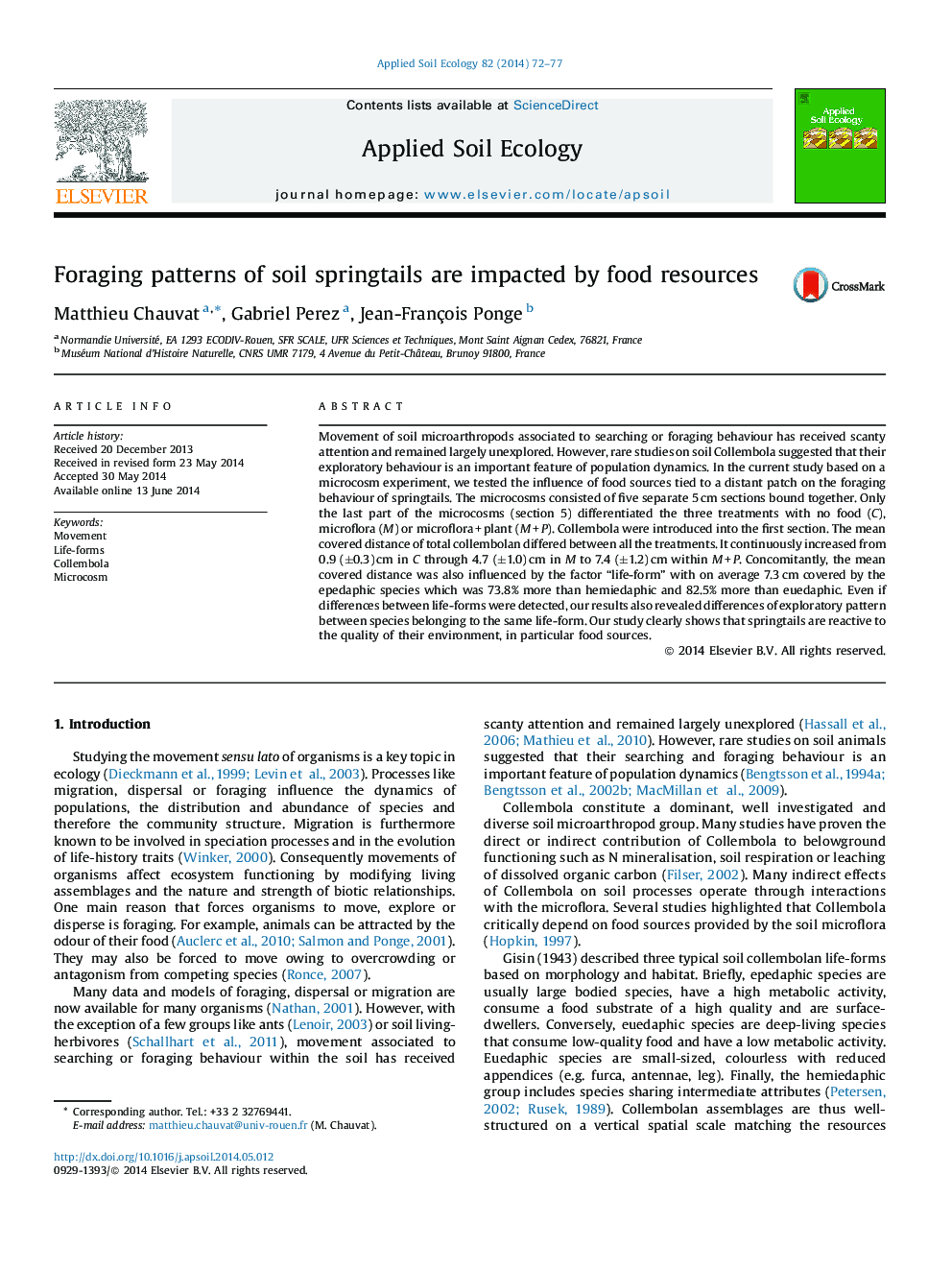| Article ID | Journal | Published Year | Pages | File Type |
|---|---|---|---|---|
| 4382152 | Applied Soil Ecology | 2014 | 6 Pages |
•We estimated the foraging pattern of Collembola in a microcosm study.•Distance covered and migration rate were estimated according to three food sources.•Microflora with plant as food source led to the highest distance covered.•Foraging pattern depends of both food source offered and life-form of springtails.
Movement of soil microarthropods associated to searching or foraging behaviour has received scanty attention and remained largely unexplored. However, rare studies on soil Collembola suggested that their exploratory behaviour is an important feature of population dynamics. In the current study based on a microcosm experiment, we tested the influence of food sources tied to a distant patch on the foraging behaviour of springtails. The microcosms consisted of five separate 5 cm sections bound together. Only the last part of the microcosms (section 5) differentiated the three treatments with no food (C), microflora (M) or microflora + plant (M + P). Collembola were introduced into the first section. The mean covered distance of total collembolan differed between all the treatments. It continuously increased from 0.9 (±0.3) cm in C through 4.7 (±1.0) cm in M to 7.4 (±1.2) cm within M + P. Concomitantly, the mean covered distance was also influenced by the factor “life-form” with on average 7.3 cm covered by the epedaphic species which was 73.8% more than hemiedaphic and 82.5% more than euedaphic. Even if differences between life-forms were detected, our results also revealed differences of exploratory pattern between species belonging to the same life-form. Our study clearly shows that springtails are reactive to the quality of their environment, in particular food sources.
